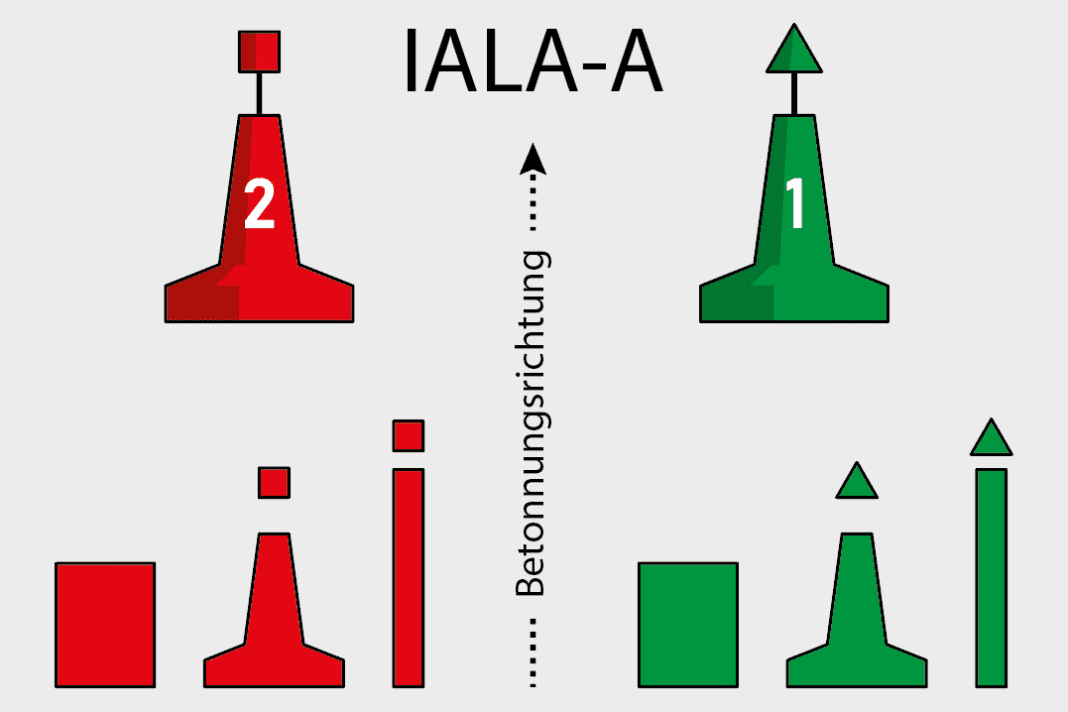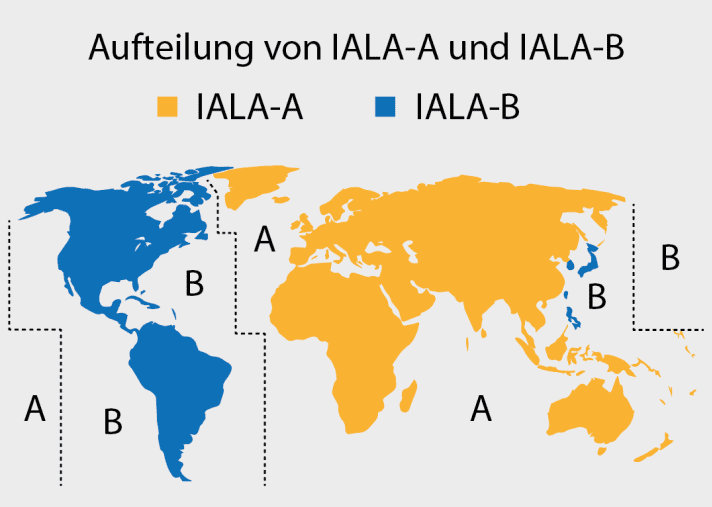Practice: Buoyage of fairways - IALA-A and IALA-B






Until the mid-1970s, there were around 30 different methods of buoyage worldwide with a variety of colours, shapes and top marks. Confusion repeatedly led to serious maritime accidents in critical situations.
IALA-A: Goal of international labelling
In 1976, the members of the "International Association for Maritime Aids to Navigation and Hydrographic Services" (IALA) therefore decided to develop a uniform system for lateral buoyage (with the colours red and green) and cardinal buoyage (black and yellow).
The so-called IALA-A system marks fairways with red buoys and blunt top marks on the port side and green buoys and pointed top marks on the starboard side. It is now standard in Europe, Oceania, Africa and a large part of Asia.
IALA-B: Swapped colours in some regions
There are historical reasons why there is another parallel system for labelling. The IALA-B system was introduced in 1980 for the remaining areas (North and South America, Japan, Taiwan, South Korea and the Philippines) in order to take into account already established large-scale regional standards.
The only difference, however, is that the colours red and green have been swapped, with green buoys with a blunt top sign on port and red buoys with a pointed top sign on starboard. The same applies to the marking of branching and incoming fairways.
If you are travelling in an area with buoyage according to IALA-B, for example in the Caribbean, you can remember the following mnemonic: "red, right, return" - when returning (to port, i.e. when approaching) you have red on the right-hand side, i.e. "red, right, return".

Uniformity for other navigation marks
However, the other types of navigational aids are completely identical. This standardised group includes the cardinal system with four black and yellow navigation marks to designate general danger spots, the marking of individual danger spots (black and red), special areas (yellow) and new wreck sites (yellow and blue). However, the latter navigational aids are not yet used in this country.
Although the appearance and area of application of the various navigation marks may differ slightly depending on the region, they always remain clearly identifiable internationally thanks to the basic common features.
IALA: serving safe navigation since 1957
The IALA has been an international governmental organisation since 2024, and Germany has already ratified its convention. Its full name is now: International Organisation for Marine Aids to Navigation (IALA). However, co-operation in the field of navigational standards has existed for much longer: the first of a series of five international conferences was held in London in 1929, which ultimately led to the founding of the IALA in 1957.
In addition to the international buoyage systems, the work of the IALA has also contributed to the introduction of important technical innovations for safe navigation, including AIS and DGPS, as well as a number of other global standards. The organisation is based in St Germain en Laye, a suburb of Paris.
